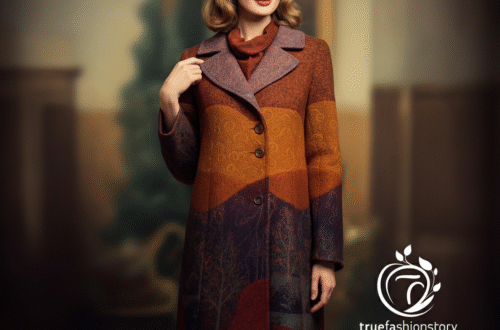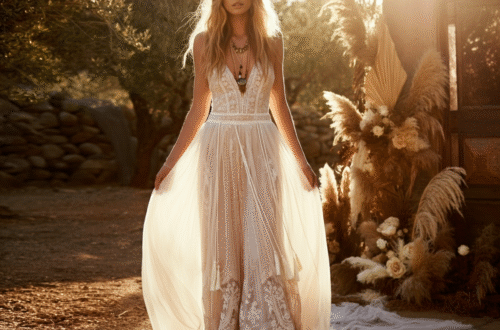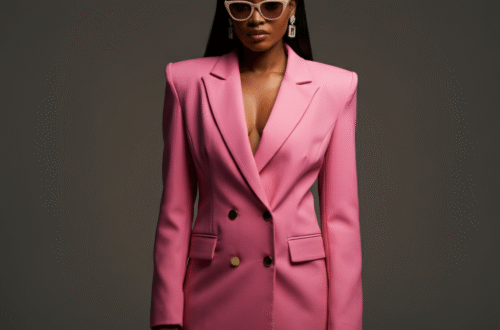In a world where fashion trends change faster than we can keep up, knowing how to evaluate the fashion becomes essential for making smart style choices. Whether you’re shopping for a new wardrobe or trying to understand what works for your personal style, learning to assess fashion properly can save you money and help you look your best.
Fashion evaluation isn’t just about following trends or copying what celebrities wear. It’s about understanding quality, fit, versatility, and how different pieces work with your lifestyle. This comprehensive guide will teach you everything you need to know about making informed fashion decisions that reflect your personality and meet your practical needs.
What Does It Mean to Evaluate the Fashion?
When we talk about how to evaluate the fashion, we’re referring to the process of critically assessing clothing, accessories, and style trends. This involves looking at multiple factors including quality, price point, versatility, and personal fit. Fashion evaluation helps you make better purchasing decisions and develop a more refined personal style.
The process goes beyond simply liking how something looks. It requires understanding fabric quality, construction methods, brand reputation, and how well items integrate with your existing wardrobe. Smart fashion evaluation also considers seasonal appropriateness, care requirements, and long-term wearability.
Many fashion enthusiasts find that developing evaluation skills transforms their relationship with clothing. Instead of impulse buying or following every trend, you learn to make strategic choices that enhance your overall appearance and lifestyle.
Understanding Fashion Quality Indicators
Fabric Quality Assessment
The foundation of good fashion lies in fabric quality. When you evaluate the fashion, start by examining the material composition. Natural fibers like cotton, wool, silk, and linen typically offer better breathability and durability than synthetic alternatives. However, modern synthetic blends can provide excellent performance for activewear and everyday clothing.
Feel the fabric between your fingers. Quality materials should feel substantial without being overly heavy. They shouldn’t feel rough, scratchy, or cheap. Look for even weaving patterns and consistent coloring throughout the garment. High-quality fabrics maintain their appearance after washing and wearing, while poor-quality materials may pill, fade, or lose their shape quickly.
Pay attention to fabric care requirements as well. While some delicate fabrics require special care, they might be worth the investment if the quality justifies the maintenance. Understanding fabric properties helps you make informed decisions about which pieces deserve space in your wardrobe.
Construction and Craftsmanship Details
Examining construction quality is crucial when you evaluate the fashion. Look closely at seams, hems, and finishing details. Quality garments feature straight, even stitching with appropriate thread colors that match the fabric. Seams should lie flat without puckering, and hems should be properly finished to prevent fraying.
Check button placement, zipper quality, and pocket construction. Buttons should be securely attached with reinforcement stitching, and zippers should operate smoothly without catching. Pockets should be functional and properly aligned, not merely decorative additions that add bulk without purpose.
Interior finishing often reveals true quality levels. Well-made garments include features like French seams, bound edges, and proper interfacing. These details might not be visible when wearing the item, but they contribute significantly to durability and overall appearance. As noted by experts at truefashionstory.comBlog, attention to these construction details separates quality pieces from fast fashion alternatives.
The Art of Fit Evaluation
Understanding Your Body Type
Proper fit evaluation starts with understanding your unique body shape and proportions. This isn’t about conforming to arbitrary categories but rather recognizing what silhouettes and cuts work best for your specific measurements and preferences. When you evaluate the fashion, consider how different styles enhance or detract from your natural proportions.
Pay attention to shoulder seams, which should align with your natural shoulder points unless the design intentionally creates a different silhouette. Waistlines should hit at flattering points on your torso, and sleeve lengths should be appropriate for the garment style. Pants and skirts should sit comfortably at your natural waist or hips without creating unflattering lines.
Remember that fit can often be adjusted through tailoring, but major alterations can be expensive and may compromise the garment’s original design. Factor alteration costs into your evaluation when considering higher-end pieces that might require professional fitting.
Comfort and Movement Assessment
True fashion evaluation includes testing how garments feel during normal activities. Sit, walk, and move your arms while trying on clothing. Quality pieces should allow natural movement without restriction, bunching, or discomfort. This is particularly important for professional wear and items you’ll wear for extended periods.
Consider the garment’s breathability and how it feels against your skin. Some fabrics may look beautiful but feel uncomfortable after extended wear. Others might seem perfect in the fitting room but cause issues throughout the day. Take time to properly assess comfort levels before making purchasing decisions.
Trend Analysis and Personal Style Integration
Distinguishing Between Trends and Timeless Style
Learning to evaluate fashion trends versus timeless pieces is essential for building a sustainable wardrobe. Trends come and go quickly, while classic styles remain relevant across seasons and years. When you evaluate the fashion, consider whether a piece represents a passing fad or has lasting appeal.
Look for updated versions of classic silhouettes rather than completely trend-driven pieces. A well-cut blazer, quality denim, or elegant little black dress can serve your wardrobe for years with proper care. These investment pieces provide better cost-per-wear value than trendy items you’ll only wear for one season.
However, don’t completely avoid trends. Incorporating small trend elements through accessories or less expensive pieces allows you to stay current without overhauling your entire wardrobe. The key is balance between timeless foundations and contemporary accents.
Versatility and Wardrobe Integration
Effective fashion evaluation considers how new pieces integrate with your existing wardrobe. Before purchasing anything, mentally catalog what you already own and consider potential outfit combinations. Versatile pieces that work with multiple items provide better value than standalone statement pieces.
Think about color coordination and style consistency. While your wardrobe doesn’t need to be monotonous, having a general color palette and style direction helps ensure pieces work together harmoniously. This approach creates more outfit options with fewer total items.
Price Point and Value Assessment
Understanding Fashion Pricing Structures
Fashion pricing varies dramatically across brands, quality levels, and market positioning. When you evaluate the fashion, understanding these pricing structures helps determine whether you’re getting good value. Designer pieces command premium prices due to brand prestige, exclusive materials, and limited production runs.
Mid-range brands often provide the best balance of quality and affordability for most consumers. These brands typically use good materials and construction methods while maintaining reasonable price points. Budget options can work well for trend pieces or items you won’t wear frequently.
Consider cost-per-wear calculations when evaluating expensive pieces. A higher-priced item that you’ll wear regularly for several years may represent better value than multiple cheaper alternatives that wear out quickly or go out of style.
Investment Pieces vs. Fast Fashion
Distinguishing between investment-worthy pieces and fast fashion alternatives is crucial for smart shopping. Investment pieces should demonstrate superior quality, timeless design, and versatility. These items justify higher prices through longevity and continued relevance in your wardrobe.
Fast fashion serves a purpose for very trendy pieces, basic items you replace frequently, or when you’re experimenting with new styles. However, building your entire wardrobe around fast fashion rarely provides long-term satisfaction or value.
Brand Reputation and Research Methods
Researching Fashion Brands
Brand research forms an important part of fashion evaluation. Established brands with positive reputations typically maintain consistent quality standards and stand behind their products. Look for brands that align with your values regarding labor practices, environmental responsibility, and quality standards.
Read customer reviews and fashion blog evaluations to understand real-world experiences with different brands. Pay attention to comments about sizing consistency, quality durability, and customer service experiences. This research helps you make informed decisions before purchasing.
Social media can provide insights into how garments look and fit on real people rather than professional models. Search for hashtags related to specific brands or pieces to see authentic styling examples and honest reviews.
Understanding Brand Positioning
Different brands target different market segments with varying quality expectations and price points. Luxury brands focus on exclusivity, premium materials, and meticulous craftsmanship. Contemporary brands balance current trends with wearable designs at moderate price points.
Understanding brand positioning helps set appropriate expectations when you evaluate the fashion from different companies. A budget brand shouldn’t be held to the same quality standards as a luxury label, but it should deliver value appropriate to its price point.
Seasonal Appropriateness and Lifestyle Factors
Climate and Weather Considerations
Practical fashion evaluation must consider your local climate and seasonal needs. Beautiful pieces that aren’t suitable for your environment won’t get much wear regardless of their quality or style appeal. Consider temperature ranges, humidity levels, and precipitation patterns when assessing clothing options.
Look for pieces that transition well between seasons or serve multiple climate needs. Layering pieces, convertible garments, and seasonally appropriate fabrics provide better wardrobe utility than items with limited weather suitability.
Lifestyle and Activity Requirements
Your daily activities and lifestyle requirements should significantly influence fashion evaluation decisions. Professional requirements, social activities, and personal interests all impact what clothing will serve you best. A piece might be beautiful and well-made but completely inappropriate for your actual life.
Consider maintenance requirements alongside your available time and resources. Delicate pieces requiring professional cleaning might not suit a busy lifestyle, regardless of their aesthetic appeal. Practical considerations often outweigh pure fashion appeal in creating a functional wardrobe.
Digital Age Fashion Evaluation
Online Shopping Assessment Techniques
Modern fashion evaluation often happens online, requiring different assessment strategies. Read size charts carefully and compare measurements to your own rather than relying solely on standard sizing. Look for detailed product photos showing construction details, fabric close-ups, and styling examples.
Pay attention to return policies and customer service quality when shopping online. Generous return policies indicate brand confidence in their products and provide protection if items don’t meet expectations. Read the fine print about return conditions, time limits, and who pays return shipping costs.
Social Media and Influencer Impact
Social media significantly influences fashion trends and purchasing decisions. When you evaluate the fashion promoted by influencers, remember that paid partnerships and professional styling may not represent realistic expectations for average consumers.
Look for authentic reviews from multiple sources rather than relying on single influencer recommendations. Consider whether promoted pieces fit within your budget, lifestyle, and existing wardrobe rather than making impulse purchases based on social media appeal.
Sustainable Fashion Evaluation
Environmental Impact Assessment
Growing awareness of fashion’s environmental impact makes sustainability an important evaluation factor. Consider the complete lifecycle of garments, including production methods, material sourcing, transportation, and end-of-life disposal options.
Look for brands committed to sustainable practices through certified organic materials, ethical manufacturing, and take-back programs. While sustainable fashion often costs more upfront, the long-term environmental and social benefits may justify premium pricing for many consumers.
Ethical Production Considerations
Evaluating fashion ethics involves researching brand labor practices and supply chain transparency. Look for certifications from organizations that monitor working conditions and fair wage practices. Brands that provide detailed information about their manufacturing processes typically have fewer issues to hide.
Consider supporting brands that contribute positively to their communities and workers rather than those focused solely on profit maximization. This approach aligns purchasing power with personal values while potentially receiving higher quality products.
Fashion Evaluation Comparison Table
|
Factor |
High Quality |
Medium Quality |
Low Quality |
|---|---|---|---|
|
Price Range |
$100-500+ |
$50-150 |
$10-50 |
|
Fabric Quality |
Premium natural fibers, luxury blends |
Good cotton, wool blends, quality synthetics |
Basic synthetics, low-grade cotton |
|
Construction |
Hand-finished details, reinforced seams |
Machine-finished, adequate construction |
Basic stitching, minimal finishing |
|
Durability |
5+ years with care |
2-3 years typical wear |
6-12 months average |
|
Versatility |
Multiple styling options |
Moderate versatility |
Limited styling options |
|
Brand Support |
Excellent customer service, warranties |
Standard support |
Minimal support |
Key Takeaways for Fashion Evaluation
- Quality over quantity: Focus on well-made pieces that will last rather than accumulating many cheap items
- Fit is fundamental: Perfect fit makes inexpensive clothing look expensive, while poor fit makes expensive clothing look cheap
- Consider your lifestyle: Choose pieces that actually work with your daily activities and environment
- Research before buying: Take time to understand brands, read reviews, and compare options
- Balance trends and classics: Build a foundation of timeless pieces while incorporating trend elements strategically
- Factor in total cost: Include maintenance, alterations, and replacement costs in your evaluation
- Trust your instincts: If something doesn’t feel right during evaluation, it probably isn’t the right choice
Frequently Asked Questions
Q: How do I know if a fashion piece is worth the price?
A: Consider cost-per-wear by dividing the price by expected number of wears. Factor in quality indicators like fabric, construction, and brand reputation. Research similar items to understand market pricing.
Q: What are the most important things to check when trying on clothes?
A: Focus on fit at key points (shoulders, waist, length), comfort during movement, and how the piece looks with items you already own. Check construction quality and fabric feel.
Q: How can I evaluate fashion quality when shopping online?
A: Read detailed product descriptions, examine close-up photos, check size charts against your measurements, and read customer reviews. Look for brands with good return policies.
Q: Should I follow fashion trends or stick to classic styles?
A: Build a foundation of classic, versatile pieces and add trend elements through accessories or less expensive items. This approach provides style variety without constant wardrobe overhauls.
Q: How do I determine if a brand is worth buying from?
A: Research brand reputation, read customer reviews, check return policies, and understand their target market. Look for consistency in quality and customer satisfaction across multiple sources.
Q: What’s the difference between expensive and well-made clothing?
A: Price doesn’t always equal quality. Well-made clothing shows superior construction, quality materials, and attention to detail regardless of price point. Some expensive items pay for brand name rather than quality.
Conclusion
Learning to evaluate the fashion effectively transforms your relationship with clothing and helps you make smarter purchasing decisions. By considering quality indicators, fit, versatility, and personal lifestyle needs, you can build a wardrobe that truly serves your needs and expresses your personal style.
Remember that fashion evaluation is a skill that improves with practice. Start by examining pieces you already own and love to understand what qualities make them special. Apply these insights when shopping for new items, and don’t rush important decisions.
The investment in learning proper fashion evaluation pays dividends through better-looking outfits, reduced clothing waste, and more confident personal style. Take time to develop these skills, and enjoy the process of creating a wardrobe that truly reflects who you are and supports how you want to live.





